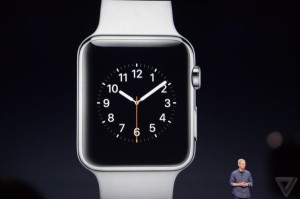 After months of speculation and rumours Apple finally unveiled Apple Watch, an extension of an iPhone that goes on the wrist to aid with many digital tasks.
After months of speculation and rumours Apple finally unveiled Apple Watch, an extension of an iPhone that goes on the wrist to aid with many digital tasks.
On sites like Hacker News, the reaction to Apple Watch was mixed, from users calling themselves an “instant customer” to long, involved criticisms. The question now is whether Apple can succeed where other device makers have not (so far).
Since the product won’t hit markets until 2015, there were no details about how IT managers might control information with the devices or the limitation of apps when they are built for Apple Watch. Apple gave examples of the watches being used in business-type environments – emails, checking into hotels – so they will clearly continue pushing them for workers demanding a streamlined digital life.
So far, the biggest barriers to smartwatch uptake has been, well, a lot of things. Everything from battery life to functionality has been pegged as a serious criticism of different designs, across models from manufacturers like Pebble, Samsung and Sony. The devices have often been thought of as a hammer without a nail – an extra gadget that doesn’t actually streamline life the way a smartphone did in the early 2000s.
Whether Apple Watch is the smartwatch answer is unclear because we can’t predict the future and because the company’s provided a fairly toothless demo. The device features a modified roller wheel on the side– a so-called “digital crown” – which is the home screen button when clicked, and a zoom button when rotated. Users tap and swipe on the sapphire screen to select and navigate apps, but there is no pinch functionality.
During the release bonanza in Cupertino on Tuesday, Apple Vice President Kevin Lynch showed off features like emojis and customisable watch faces. Yet he neglected to go in depth on more complicated cases like reading an email with an attachment or even taking a phone call.
One of the biggest complaints about smartwatches has simply been their form. Credit is due here. The Apple Watches look pretty slick. And they come in enough different sizes and styles that most folks should be able find a model that suites their threads. Apple clearly did their homework to build a watch that won’t stick out in a boardroom.
However the question still comes back to function. All but the most dedicated Apple fans will want to know exactly how much the devices are going to streamline their lives before they plunk down $349, especially since Apple Watch requires an accompanying iPhone to connect to the Internet.
So with a phone already in your pocket, Apple will need to convince people that reading directions, an email or sending a text (via voice) is actually better on the smartwatch, rather than just pulling out the phone. The company introduced “Glances,” which are quick shots of new messages or appointments on the watch — the idea being that a quick turn of the wrist will save time over pulling out the phone every few minutes during a busy work day.
These small gains may add up to big savings. Or having to deal with an extra gadget may end up outweighing those benefits at all. Time will tell.





